Muscular Endurance
Muscular endurance refers to the ability of a muscle or group of muscles to sustain repeated contractions or to maintain a continuous contraction against resistance over an extended period. It is a critical component of overall fitness, influencing performance in various physical activities, sports, and daily tasks.
What Is Muscular Endurance?
Solid perseverance is your muscles’ capacity to apply constrain against gravity or against resistance over a period of time. Whether you’re moving fair your body weight, swinging a kettlebell, or carrying a clothing bushel, your muscles contract each time you move—and the more prominent their perseverance, the longer they can keep going.
A muscle’s or a set of muscles’ capacity to maintain prolonged contractions without experiencing tiredness is known as muscular endurance. How many times you can work out after feeling worn out is a sign of strong perseverance. “More tenacity increases your muscle fibres’ capacity to continue terminating for longer periods of time, which enables you to go longer, faster, or both, without exerting more effort,” Joslyn says.
“Improved strong perseverance guarantees you can keep up great amid exercises like running, paddling, and cycling, for extended periods of time,” the progress report added. your cardiovascular perseverance and your strong perseverance both progress your capacity to keep going time recently you have to moderate down or halt, they’re not precisely the same. Muscular persistence refers to your muscles’ ability to function continuously, whereas cardiovascular perseverance refers to your heart and lungs’ ability to supply oxygen to your working muscles. and without weakness, according to Joslyn.
To construct your strong perseverance, you have to approach your workouts in an unexpected way than if your sole objective is cardiovascular perseverance.
While creating cardiovascular continuance for the most part depends on slowly amplifying the term of your workout, building strong perseverance requires resistance preparation that centers on higher redundancies and lower weights.
Why is Muscular Endurance Important?
Improving your solid continuance won’t fair progress your athletic execution; it moreover makes strides in your pose, makes you a more solid competitor, and confers well-being benefits that permit you to proceed to do regular exercises for a long time to come. If you have greater endurance, you can run, paddle, and cycle for longer periods of time and still perform at a high level. Additionally, it diminishes your hazard of injury,” says Joslyn.
As she clarifies, “Sports require great quality development throughout.” Say, for illustration, you’re a runner with a frail center. As you weaken, you start to slump, which over time, can make lopsided characteristics all through the rest of your motor chain, which can lead to throbs and torments. And those throbs and torments can end up wounds if you’re not cautious. On the other hand, a solid center will assist you in keeping up great shape, indeed as you weariness.
The research shows that changes in strong perseverance can too boost execution. A consider isolated well-trained cross-country skiers into two bunches. Both bunches proceeded with their moo and direct escalated preparation, but one gathers supplanted their twice-a-week high-intensity sessions with interim running, whereas the other bunch supplanted one high-intensity session with an interim run and supplanted the other with strong perseverance preparing. After six weeks, the skiers who included strong perseverance in their preparation performed superior in a 1,000-meter time trial.
A little ponder found that sound grown-ups who weren’t fundamentally prepared competitors experienced superior perseverance as a result of solid perseverance preparation. After four weeks of preparation, subjects’ muscles proceeded to fire at the same rate, indeed as the length expanded.
If you’re still not persuaded of the benefits of moving forward with your strong perseverance, consider the positive effect on your well-being and life span. A meta-analysis of grown-ups with type 2 diabetes found that strong perseverance in preparation was related to more steady blood sugar levels as well as superior strong quality and diminished midriff circumference and body fat. The think-about creators said the benefits were comparable to oxygen-consuming preparation, calling it a “potent” intervention.
Muscular Quality
Muscular quality alludes to how much drive you can produce at once. For example, your one-rep max for a squat, seat press, deadlift, or overhead press is a degree of the strength of the muscle bunches performing those developments.
Muscular Continuance
Muscular continuance, on the other hand, alludes to your capacity to support rehashed muscle compressions over time. Your submaximal stack should be at least 50% of your one-rep maximum, Joslyn says, explaining that the number of repetitions you can lift a submaximal stack is known as solid continuance.
The heaviest stack you can squat one time is 150 lbs, your solid continuance would be a degree of how numerous times you can squat 75 lbs or less. To construct your strong perseverance, you’d center on expanding the number of reps you can total with a 60 to 75 lb. stack.
How to Make Strides Solid Endurance?
”Muscle perseverance is muscle gather specific,” says Joslyn. So if you need to run a marathon, center on lower body works, not overhead presses. On the other hand, if you’re a server carrying an overwhelming plate over a huge eating room all night long, your time would be way better through fortifying your upper body.
Once you know which muscle gather you’re focusing on, select a set of significant works and join them into your schedule at slightest once or twice a week. Whether you do them on their claim or as a portion of your oxygen-consuming workout (e.g. running or cycling), depends on your inclination and time limitations.”You seem to do them as a stand-alone workout, but for time effectiveness, I would usually group them close to another workout,” Joslyn said.
If you select to stack your strong perseverance workout on the beat of your cardio, you’ll be superior off attaching it to the conclusion of a moo to moderate-intensity session. The light stack suggests that they won’t be overbearing and that you should still be able to get in a couple of excellent developments without missing any from your primary workout,” clarifies Joslyn.
Joslyn agrees that it can be detrimental to begin your vigorous continuous preparation when you are already worn out from a challenging aerobic workout. To keep a fantastic body throughout, she says, “I probably wouldn’t do them after a really intense workout.”
On the other hand, there are a few pieces of information to propose you might need to do your resistance training
when you’re now exhausted from oxygen-consuming preparation. A little ponder distributed Diary of Quality and Conditioning Investigate found that when compared to ladies who completed resistance preparing partitioned from oxygen consuming preparing, those who scattered oxygen consuming preparing with resistance preparing experienced more noteworthy picks up in six out of nine preparing measurements, counting lower body muscle continuance, and diminishes in body fat. Eventually, your objectives and encounter level may be managed when you choose to quality train.
Effective Works for Solid Endurance
Lunges for Solid Endurance For sports that depend on lower body muscles, such as running and cycling, thrusts are an awesome alternative, says Joslyn. If that development is unused to you, she exhorts beginning with bodyweight as it were, including weight as it were once you’re comfortable with the development and sure that your frame is great. (The final thing you need is to overcompensate and take time off from your preparation to nurture and damage.)
She moreover recommends attempting a couple of diverse varieties, counting an invert thrust (venturing one leg back instead of forward) and a part squat (an inactive thrust where your feet remain planted input). She suggests starting by becoming accustomed to doing two to three sets of ten to fifteen repetitions of a particular development, with a little hiatus in between sets. If you’re experienced with thrusts, attempt it with a weight that makes the development feel challenging for the final two to three reps of each set. Joslyn says that while some minor testing could be necessary, “you will know what feels good over time.”
Meanwhile, building a solid center is a fundamental viewpoint of progressing strong perseverance that interprets execution picks up in any wear. In expansion to making a difference with adjusting, damage avoidance, and pose, a more grounded center implies you can exchange control more effectively. A solid steady center to thrust off lets you create more control with each pedal stroke—which implies you can go speedier with less effort.
In order to maximize your center quality, Joslyn suggests including boards in your timetable. “Planking is an excellent method for achieving consistent improvement and can be performed nearly every day without interfering with other workouts.” The pace at which things have become better is really satisfying for young children. The light stack suggests that they won’t be overly demanding, so you should still be able to get in a few high-caliber developments without taking away from your primary workout,” Joslyn describes.
Muscular Endurance Exercises
Squats
Step-by-Step Guide to Squats
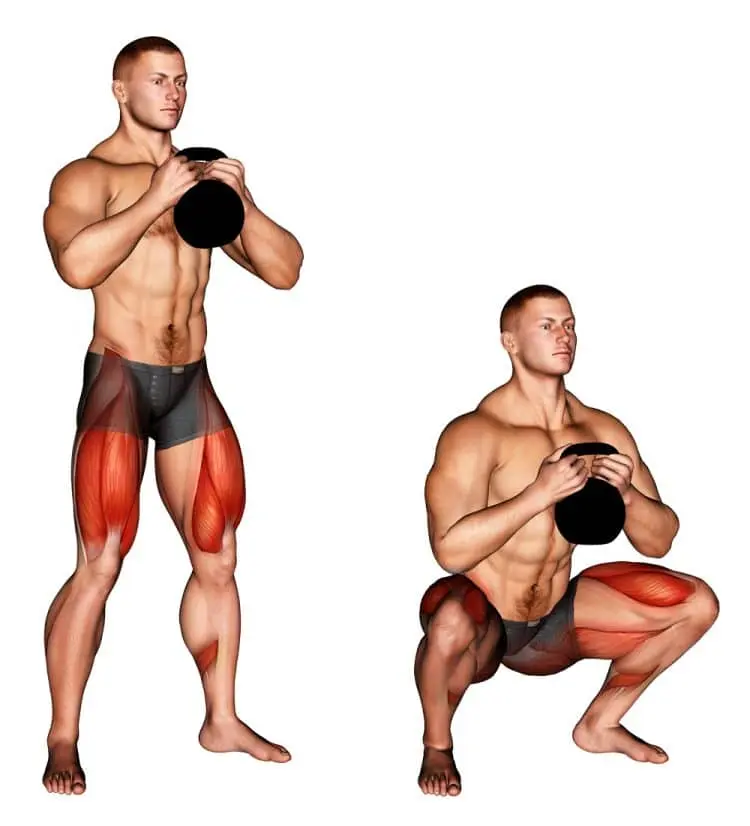
1. Starting Position
- Toes pointing slightly outward, place your feet shoulder-width apart or a little wider, and stand tall.
- Maintain a lifted chest, neutral spine, and back shoulders.
2. Begin the Movement
- As if seated in a chair, thrust your hips back and shift your weight onto your heels.
- Keep your chest up straight as you lower your body by bending your knees.
3. Go as Low as Comfortable
- Lower yourself as far as your range of motion will allow or until your thighs are parallel to the floor.
- Try to keep your knees in line with your toes and not bend inward.
4. Return to Standing
- Straighten your legs and push through your heels to stand back up.
- Exhale while maintaining an active core as you stand up.
5. Repeat
- Keep your form correct as you complete the required amount of repetitions.
- Squat 10-15 times (This is one set.)
- Rest 30-60 seconds
- Repeat two to five times
- If you utilize weights, select a weight that feels challenging for the last two to three redundancies of each set.
- Bodyweight, dumbbell, challis, and sumo squats are among the variations.
Lunges
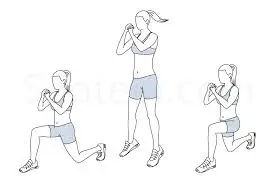
1. How to Perform a Basic Lunge
- Alternate legs or perform all reps on one side before switching.
2. Starting Position:
- Stand tall with feet hip-width apart.
- Place your hands on your hips.
3. Step Forward:
- Take a large step forward with one leg (e.g., right leg).
- Make sure that your foot lands flat.
4. Lower Your Body:
- Both knees should be bent to create two 90-degree angles.
- Lower your back knee toward the ground but don’t let it touch.
- Keep your front knee directly above your ankle to avoid strain.
5. Return to Standing:
- To get back to where you were before, push through the forward foot’s heel.
6. Repetition:
- Rest 30-60 seconds
- Repeat two to five times
- If you utilize weights, select a weight that feels challenging for the last two to three redundancies of each set.
- Variations incorporate turn-around lurches, part squats, side thrusts, and bow thrusts
Planks
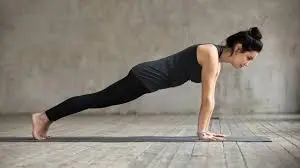
Step-by-Step Instructions for a Standard Forearm Plank
1. Starting Position
- Make sure you lie face down on a floor or floor mat.
- Lay flat on the mat with your palms down or your forearms locked together.
- On the mat, place your forearms flat with your palms facing down or your hands clasped together.
2. Lift Your Body
- To use your core, tighten your abdominal muscles to activate it.
- Raise yourself up onto your toes.
- Ensure your back doesn’t arch or round—keep your spine neutral.
3. Maintain Proper Alignment
- Head: Keep your head in a neutral position, gazing slightly forward or straight down at the mat.
- Shoulders: To prevent stress, keep your shoulders away from your ears.
- Hips: Avoid letting your hips sag.
- Feet: Keep your feet hip-width apart or together, depending on your comfort and balance.
4. Hold the Position
- Breathe naturally while holding the position.
- Keep your core, glutes, and legs engaged to maintain stability.
5. Rest and Repeat
- After the allotted period, carefully lower your body to the ground.
- Rest for 30-60 seconds before repeating.
Key Points to Remember
- Duration: As your strength increases, progressively extend it from 20 to 30 seconds at first.
- Form Over Time: Maintain proper form; it’s better to hold a plank for a shorter duration with correct form than to extend time with poor posture.
- Breathing: Avoid holding your breath; breathe steadily.
- Hold for 30-60 seconds
- Rest 30-60 seconds
- Repeat two to five times
- Variations incorporate sideboards, boards with bear taps, and boards with hip plunge
Pushups
Step-by-Step Guide to Push-ups

1. Starting Position
- On the floor or a mat, lie face down.
- Your hands should be somewhat broader than shoulder-width apart, with the fingers pointing forward.
- Position your feet together or slightly apart, depending on comfort and balance.
- Straighten your arms to form a straight line from your head to your heels and lift your body off the floor. This is the starting position.
2. Engage Your Core
- In order to support your spine, tighten your abdominal muscles.
- Keep your hips from sagging or arching, and keep your back flat.
3. Lower Your Body
- Bending at the elbows, slowly lower your chest toward the floor.
- Lower while keeping your head and heels in a straight line.
- Stop when your chest is just above the floor or your elbows are at a 90-degree angle.
4. Push Back Up
- Return to the beginning posture by straightening your arms by pressing through your palms.
- Make sure your body remains in alignment as you exhale throughout the push-up.
5. Repeat
- Do as many repetitions as you want, paying close attention to your form the entire time.
- Perform 10-20 pushups
- Rest 30-60 seconds
- Repeat two to five times
- Variations incorporate divider pushups, knee pushups, wide hold pushups, and slant pushups
How Often Should I Perform in Strong Muscular Endurance?
When it comes to the recurrence of your strong perseverance preparing, more regularly isn’t fundamentally superior. A 2018 metastudy analyzed 74 test bunches from 12 ponders. The analysts found no noteworthy relationship between the number of times individuals prepared per week and their execution.
In truth, those who prepared as it were once a week experienced comparatively compared to those who prepared three or more times per week when the add-up to preparing volume was calculated. In other words, you’re likely to see the same advantage from doing nine sets of 20 thrusts once a week as you would from doing three sets of 20 jumps three times per week.
Whatever you do, don’t belittle the significance of rest and recuperation. As Joslyn explains, “You need time off in between strong continuance sessions to give your muscles a chance to recover and adjust to the stretch you put on them.” By and large, she recommends giving each muscle bunch at slightest 24 hours to recuperate some time recently preparing it again.
How to Degree Solid Continuance Progress
While there are an assortment of ways to test your advance, it’s best to make sure that your evaluations are both straightforward and adjusted with your objectives. Concurring to Joslyn, a runner or cyclist would be superior off testing lower body strong perseverance utilizing moves like squats or jumps, as restricted to pushups, which generally test your upper body and core.
She recommends beginning off with two to three sets of 10-15 reps of a given workout and pointing to increments to three sets of 15-25 reps over a period of six to eight weeks. You can use something as simple as logging your workouts on your phone or on a notepad and reviewing your progress every month or two as your “test.”
Benefits of Muscular Endurance
- Improved Cardiovascular Health: Regular muscular endurance training can lower blood pressure and reduce the risk of cardiovascular diseases by improving blood circulation to muscles.
- Enhanced Metabolic Health: It boosts mitochondrial function, aiding in energy production and improving overall metabolic markers.
- Postural Stability: By improving muscle tone and endurance, helps maintain good posture and reduces the risk of back pain.
- Injury Prevention: Strengthening muscles through endurance exercises can decrease the risk of musculoskeletal injuries.
- Supports Weight Management: Boosts metabolism through prolonged muscle activity, aiding in calorie burn in obesity.
- Helps maintain lean muscle mass, which is key to long-term weight management.
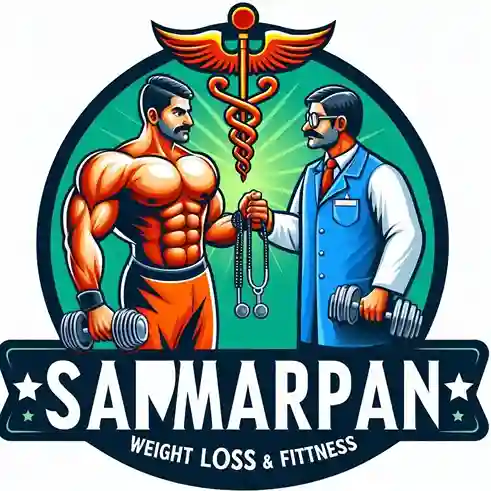

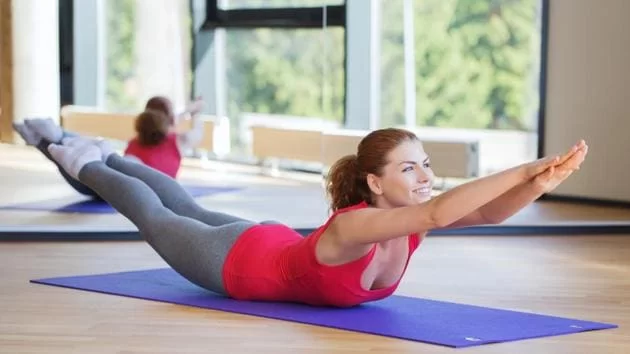



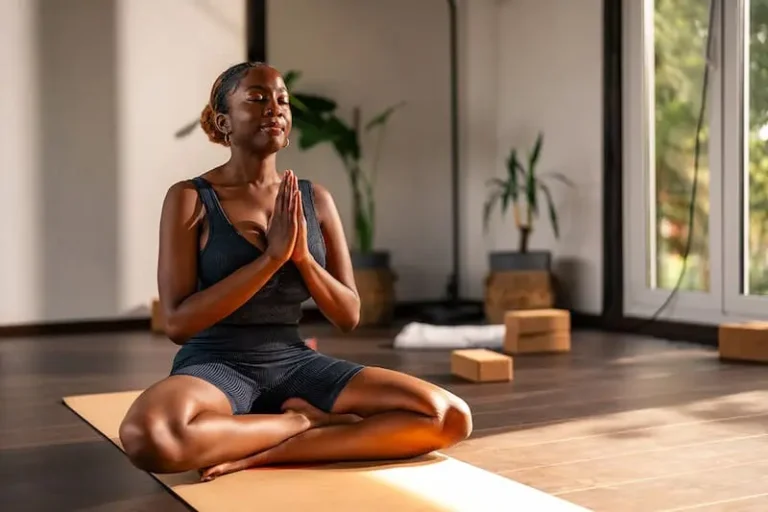

One Comment